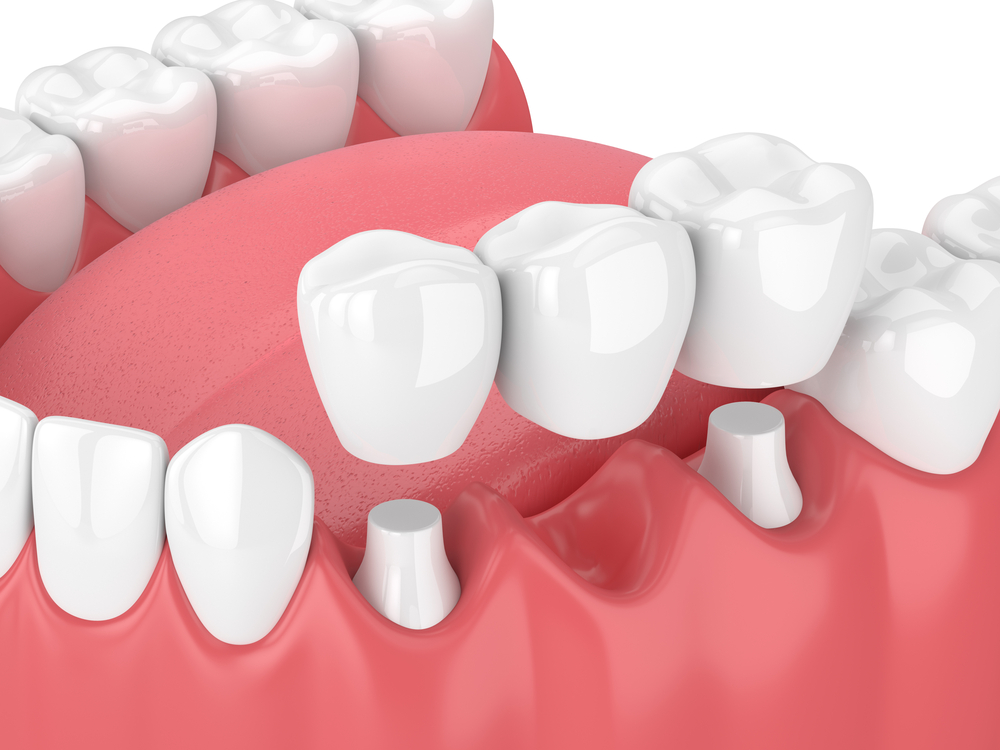A dental bridge is a prosthetic that replaces one or more lost teeth in a row. Dental bridges are named for their structure. If you’ve lost one or two teeth, a dental bridge will literally bridge the gap with replacement teeth.
In today’s blog, we’ll review the main types of dental bridges, their purposes, and how they’re placed. Call 214-827-1885 to schedule an appointment with Dr. Patel or Dr. Sigurdson to learn which type of dental bridge will work best for your situation. A comprehensive consultation and discussion about your goals and lifestyle factors will help the dentist advise you on the best treatment option.
Definitions
Before we begin, you need to know these few terms:
- Pontic: solid replacement teeth
- Abutment teeth: teeth onto which crowns are placed to support a bridge
- Crown: also called caps, crowns are cemented over a tooth and cover the entire portion of the tooth above the gum line
- Wings: porcelain or metal fixtures that extend from either side of a pontic or two pontics fused together
Traditional Fixed Dental Bridges
The most common type of bridges, fixed dental bridges bond to a crown on either side of the space left by one or two teeth. The name is deceptive because bridges are not removable; they are all fixed. Partial dentures are removable.
The crowns of the traditional dental bridge are placed on healthy abutment teeth. As with placing an individual crown, receiving teeth must be prepared by reducing tooth enamel. In some cases, crown lengthening may be indicated, as well.
With good oral health and in the absence of accidents, a traditional bridge should last five to seven years. It can last 10 years or longer, in some cases.
Cantilever Bridges

A cantilever bridge features a crown on only one side, instead of both sides. We use cantilever dental bridges when there’s only one abutment tooth next to where the bridge will reside. Another opportunity to use this type of bridge is when a tooth on one side of the gap is a front tooth. Crowning it would make the patient’s smile look altered.
Cantilever bridges are not as durable as traditional fixed bridges, so they aren’t for everyone. Also, the abutment tooth may fail due to the pressures it endures from the pontic(s).
Maryland Bridge

Often used to replace one or more front teeth, the Maryland bridge does not feature crowns. Instead, metal or porcelain wings off either side of the pontics are cemented behind supporting teeth. For this reason, Maryland bridges are more conservative than traditional dental bridges.
Maryland bridges cannot replace molars; they simply aren’t strong enough to withstand the pressure that molars must endure when chewing. Also, they must be rebonded every five to seven years to remain stable. Patients must practice meticulous oral hygiene to ward off decay around the wings.
Implant-Supported Bridges

Dental implants are small screwlike posts placed into the jawbone where teeth have been lost. Two dental implants can support a bridge, so no crowns are necessary. With good oral hygiene, dental implants can last a lifetime. The bridge itself will need replacement when it incurs wear, damage, or discoloration.
Dental Materials Used for Bridges
Dr. Patel or Sigurdson will discuss these materials and let you know which will best suit your bridge.
- Porcelain/ceramic – cosmetically pleasing
- Zirconia/zirconium dioxide – cosmetic and very strong
- Composites – cosmetic
- Metal (gold; palladium, chromium, or nickel alloys) – strongest
- Porcelain fused to metal (PFM) – cosmetic and strong
Schedule Your Consultation Today
If you’re missing one or more teeth, you’re statistically likely to lose additional teeth within the next four years. Don’t allow your oral health to spiral downward. Instead, call Lakewood Dental Group in Dallas today at 214-827-1885 to schedule your consultation with Dr. Patel or Sigurdson. Our dentists help patients explore treatment options to find the best solutions to their dental problems.


